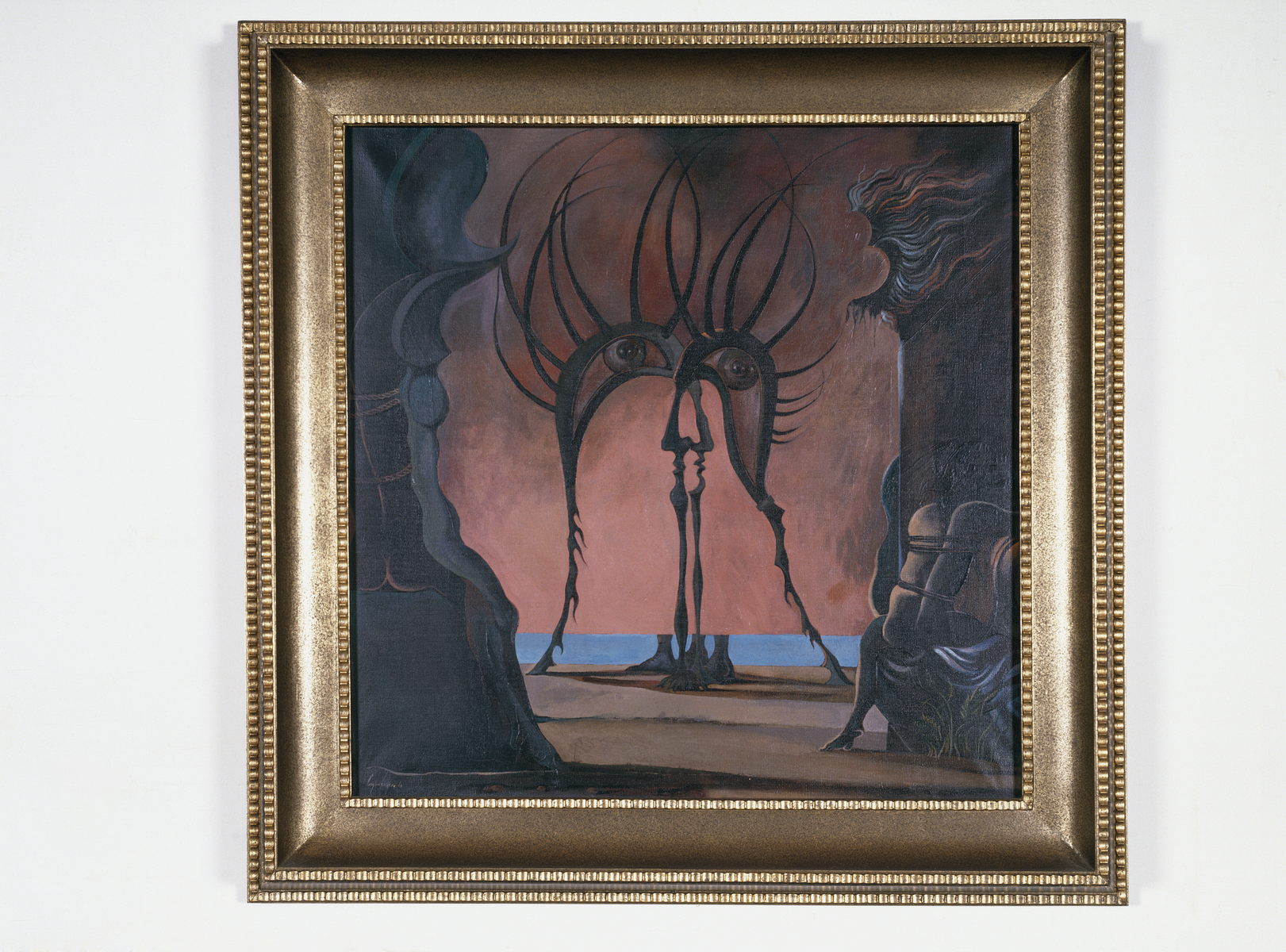Commemorating Artur Cruzeiro Seixas, who passed away in Lisbon on November 8, Collection Caixa Geral de Depósitos is highlighting No palco uma golfada ainda pelo rasgão calcinado (1980). This oil on canvas painting, acquired in 1985, mirrors the artist's resilience and pledge to the surrealist movement. Throughout his extensive work in the fields of drawing and painting, and poetry and sculpture as well, the artist fashioned his very own distinguishable language. The precise lines of his works convey delusional, often sexual, shapes, spaces and figures. A fantastic narrative that comes close to literature and to conceivable tales of humour or sarcasm. In the conventional background of the Portuguese society of his time, the erotic forms recurring throughout his career constitute a vivid account of the restless and pertinent quality of his work, strikingly shown in the painting No palco uma golfada ainda pelo rasgão calcinado. The two character-figures portray a motionless scene of intense amorous intimacy in a stagelike background. The confined space the figures inhabit could symbolize a social corset that envelops their libertarian condition, the promiscuity of gender-free bodies, a guise of transgression that may be one of the paths to an auspicious freedom.
Artist and poet Cruzeiro Seixas attended the Escola de Artes Decorativas António Arroio, between 1935 and 1941, where he befriended Mário Cesariny, Marcelino Vespeira, and Fernando Azevedo, among other artists, with whom he joined the Portuguese Surrealist movement in the late 1940s. Although he was drawn to neorealism between 1945 and 1946, he never moved away from surrealism, to which he had adhered from an early age, later becoming one of the movement’s leading exponents. He joined the merchant navy in 1950, traveling through Africa, India and the Far East. He lived in Luanda between 1952 and 1964 working at the Angola Museum. He returned to Lisbon in 1964, at the beginning of the colonial war, and undertook a journey through Europe. In 1967, during his stay in Paris, he was awarded a scholarship from Fundação Calouste Gulbenkian. In Portugal, he continued his activity as a curator and artistic consultant at Galeria São Mamede, Lisbon, at Galeria da Junta de Turismo da Costa do Sol, Estoril, and years later, in the 1980s, at Galeria D’Arte, Vilamoura. His artistic and professional activity also includes book illustrations and set designing for Companhia Nacional de Bailado and the Ballet Gulbenkian. He donated his entire collection and estate to the Fundação Cupertino Miranda, Vila Nova de Famalicão, in 1999, to establish a bureau of surrealist research, the Centre for Surrealist Studies. In 2009, he was awarded the rank of Grand Officer of the Military Order of Saint James of the Sword. He lived his last years at Casa do Artista, Lisbon, and died at Hospital de Santa Maria, Lisbon, a few days before his hundredth birthday.
Hugo Dinis
75 x 75 cm


